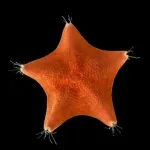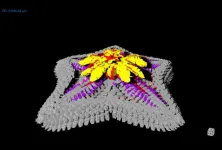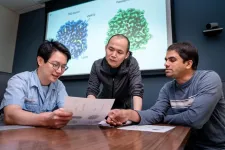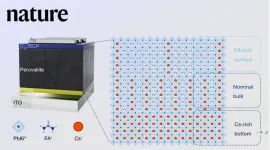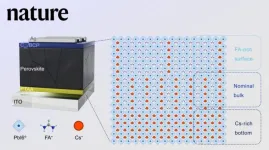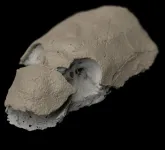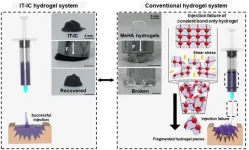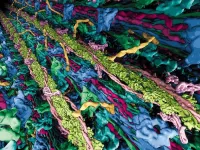(Press-News.org) Researchers at Baylor College of Medicine and collaborating institutions working with human intestinal organoids, also called mini guts, have shed new light on the potential causes of Cronkhite-Canada syndrome, a rare condition characterized by abundant non-cancerous growths or polyps in the intestine and other symptoms such as hair and nail loss and changes in skin pigmentation. Published in The Journal of Clinical Investigation, the study is the first to show a connection between high polyp proliferation and increased levels of serotonin produced by the intestinal epithelium.
The findings suggest a potential new approach to treat this disease with serotonin inhibitors already approved for other conditions, offering the possibility of improving the outcome of this disease for which the current prognosis is poor. The work also highlights not only the value of human organoid technology to help understand any disease but also to identify potential clinical applications.
“During my clinical rounds, I met a patient with Cronkhite-Canada syndrome and became very interested in better understanding this little known condition,” said first author Victoria Poplaski, a graduate student in Dr. Sarah Blutt’s lab at Baylor. “Patients with Cronkhite-Canada syndrome have diarrhea, weight loss, abdominal pain, anorexia and nausea. About 500 people have been diagnosed with this disease worldwide so there have not been many opportunities to investigate it to identify its causes and potential therapies.”
Poplaski and her colleagues applied their expertise in developing human intestinal organoids to take a closer look at what could be triggering so much proliferation in the patient’s intestine. Human intestinal organoids, or mini guts grown in the lab, model human intestinal cells, closely representing actual small intestine tissue and its functions.
Poplaski received a biopsy sample or tissue from the patient’s intestine and developed mini guts from it in the lab. “We discovered that, compared to mini guts from people without Cronkhite-Canada syndrome, the patient-derived mini guts were highly proliferative. They also had many more enteroendocrine cells, the cell type in the intestine that specializes in producing hormones, and the enteroendocrine cells abundantly present in the patient’s mini guts produced serotonin,” Poplaski said. “We confirmed these features in patient tissue biopsies.”
More than 90% of serotonin in the body is produced by the enteroendocrine cells in the intestinal tract. Although serotonin is best known for its role as a neurotransmitter in the central nervous system, it also affects a variety of functions in other organs, including some functions of the intestinal epithelium.
“Supporting the novel role of serotonin in intestinal epithelial proliferation, we found that treating non-Cronkhite-Canada syndrome organoids with serotonin increased their proliferation and inhibiting serotonin production in the Cronkhite-Canada syndrome organoids decreased proliferation, suggesting a link between local serotonin production and control of epithelial intestinal cell proliferation,” said Blutt, associate professor of virology and microbiology at Baylor and corresponding author of the work. “The findings suggest the potential benefit of serotonin inhibitors to treat this condition.”
This research is a perfect example of how organoid cultures can lead to new discoveries about the biology underlying rare diseases.
“When we started this research, some people said it was not worthwhile because initially we only had a single patient to study. I disagreed and thought we might find something worthwhile,” said co-author Dr. Mary Estes, Distinguished Service Professor of Virology and Microbiology and Cullen Foundation Endowed Chair at Baylor. She also is a member of Baylor’s Dan L Duncan Comprehensive Cancer Center. “The results from the organoids derived from that single patient yielded completely unexpected and exciting data that might lead to new therapies. Then we were able to confirm these results with organoids from a second patient. I am hoping this study will lead to contacts with more physicians caring for patients with Cronkhite-Canada syndrome and a clinical trial to test the new basis for a process that leads to this condition that we discovered in this work.”
Other contributors to this work include Carolyn Bomidi, Amal Kambal, Hoa Nguyen-Phuc, Sara C. Di Rienzi, Heather A. Danhof, Xi-Lei Zeng, Linda A. Feagins, Nan Deng, Eduardo Vilar, Florencia McAllister, Cristian Coarfa, Soyoun Min, Hyun Jung Kim, Richa Shukla and Robert Britton. The authors are affiliated with one of the following institutions: Baylor College of Medicine, the University of Texas at Austin Dell Medical School, the University of Texas MD Anderson Cancer Center-Houston or the Lerner Research Institute at Cleveland Clinic.
See the publication for a complete list of the financial support for this project.
###
END
Human mini guts reveal new insights into the process leading to Cronkhite-Canada syndrome and potential new therapies
2023-11-01
ELSE PRESS RELEASES FROM THIS DATE:
Long presumed to have no heads at all, sea stars may be nothing but
2023-11-01
For centuries, naturalists have puzzled over what might constitute the head of a sea star, commonly called a “starfish.” When looking at a worm, or a fish, it’s clear which end is the head and which is the tail. But with their five identical arms — any of which can take the lead in propelling sea stars across the seabed — it’s been anybody’s guess how to determine the front end of the organism from the back. This unusual body plan has led many to conclude that sea stars perhaps don’t have a head at all.
But ...
Starfish body is a head, say scientists
2023-11-01
EMBARGOED: Not for Release Until 01 November 2023 at 16:00 (London time)
The bodies of starfish and other echinoderms are more like heads, according to new research involving the University of Southampton.
The research, published today [1 November] in Nature, helps to answer the mystery of how these creatures evolved their distinctive star-shaped body, which has long puzzled scientists.
Echinoderms are a group of animals that includes starfish (or sea stars), sea urchins, and sand dollars. They have a unique ‘fivefold symmetric’ body plan, which means ...
Scientists reveal structures of neurotransmitter transporter
2023-11-01
(Memphis, Tenn – November 1, 2023) Neurons talk to each other using chemical signals called neurotransmitters. Scientists at St. Jude Children’s Research Hospital have drawn on structural biology expertise to determine structures of vesicular monoamine transporter 2 (VMAT2), a key component of neuronal communication. By visualizing VMAT2 in different states, scientists now better understand how it functions and how the different shapes the protein takes influence drug binding — critical information for ...
Heterogeneity of Earth’s mantle may be relics of Moon formation
2023-11-01
An interdisciplinary international research team has recently discovered that a massive anomaly deep within the Earth’s interior may be a remnant of the collision about 4.5 billion years ago that formed the Moon.
This research offers important new insights not only into Earth’s internal structure but also its long-term evolution and the formation of the inner solar system.
The study, which relied on computational fluid dynamics methods pioneered by Prof. DENG Hongping of the Shanghai Astronomical Observatory (SHAO) of ...
Study reveals location of starfish’s head
2023-11-01
If you put a hat on a starfish, where would you put it? On the center of the starfish? Or on the point of an arm and, if so, which one? The question is silly, but it gets at serious questions in the fields of zoology and developmental biology that have perplexed veteran scientists and schoolchildren in introductory biology classes alike: Where is the head on a starfish? And how does their body layout relate to ours?
Now, a new Stanford study that used genetic and molecular tools to map out the body regions of starfish – by creating a 3D atlas of their gene ...
Scientists propose perovskite films homogenizing strategy to increase conversion efficiency
2023-11-01
In a study published in Nature, researchers from the Hefei Institutes of Physical Science (HFIPS) of the Chinese Academy of Sciences have proposed a new and promising method of fabricating homogenized perovskite films for solar cells. The process involves inhibiting phase segregation caused by internal cation inhomogeneity to increase conversion efficiency to 26.1%, thus tying the existing record.
Their work was also featured as a Nature Editor’s Pick.
For solar cells, an important alternative energy ...
Scientists propose perovskite film homogenizing strategy to increase conversion efficiency
2023-11-01
In a study published in Nature, researchers from the Hefei Institutes of Physical Science (HFIPS) of the Chinese Academy of Sciences have proposed a new and promising method of fabricating homogenized perovskite films for solar cells. The process involves inhibiting phase segregation caused by internal cation inhomogeneity to increase conversion efficiency to 26.1%, thus tying the existing record.
Their work was also featured as a Nature Editor's Pick.
For solar cells, an important alternative energy source, the pursuit of higher conversion efficiency and the attempt to keep the cells table as long as possible are core issues that scientists and engineers all over the world are ...
How the fish got its shoulder
2023-11-01
A new analysis of the bones and muscles in ancient fish gives new clues about how the shoulder evolved in animals – including us.
The shoulder girdle – the configuration of bones and muscles that in humans support the movement of the arms – is a classic example of an evolutionary ‘novelty’. This is where a new anatomical feature appears without any obvious precursors; where there is no smoking gun of which feature clearly led to another.
The new research, which draws together a range of evolutionary investigation techniques including fossils, ...
New “injectable tissue prosthesis coupled with closed-loop bioelectronic system” to aid in damaged muscle/nerve regeneration and robot-assisted rehabilitation
2023-11-01
In a recent publication in the journal Nature, researchers from the Institute of Basic Science (IBS) in South Korea have made significant strides in biomaterial technology and rehabilitation medicine. They've developed a novel approach to healing muscle injury by employing “injectable tissue prosthesis” in the form of conductive hydrogels and combining it with a robot-assisted rehabilitation system.
Let’s imagine you are swimming in the ocean. A giant shark approaches and bites a huge ...
Breakthrough discovery sheds light on heart and muscle health
2023-11-01
Atrial fibrillation, heart failure and stroke – hypertrophic cardiomyopathy can lead to many serious health conditions and is a major cause of sudden cardiac death in people younger than 35. „The heart muscle is a central engine of the human body. Of course, it is easier to fix a broken engine, if you know how it is built and how it functions”, says Stefan Raunser. “At the beginning of our muscle research we have successfully visualized the structure of the essential muscle building blocks and how they interact using electron cryo-microscopy. However, these were static images of proteins taken out of the living cell. They only tell us little ...
